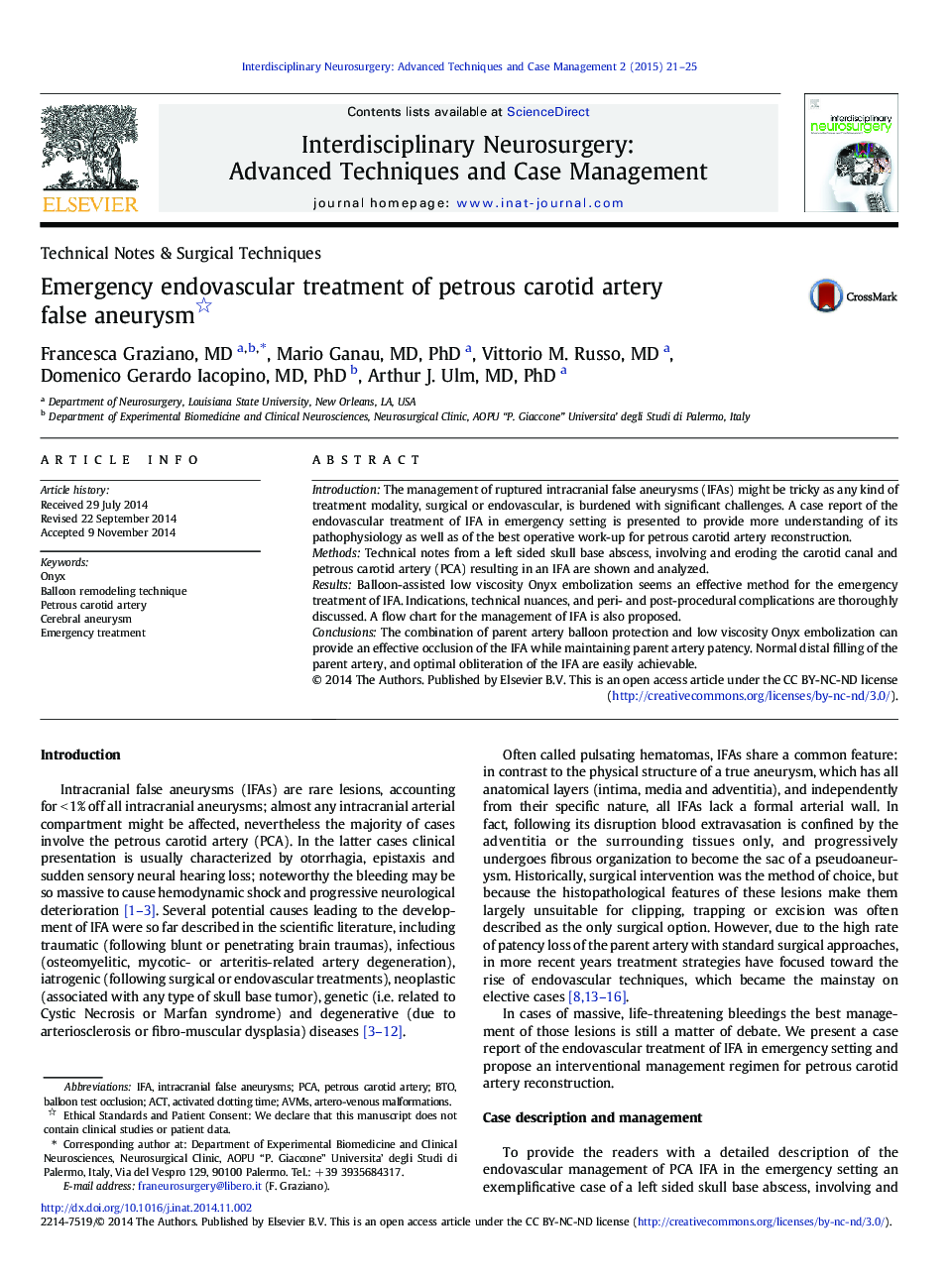| Article ID | Journal | Published Year | Pages | File Type |
|---|---|---|---|---|
| 3057815 | Interdisciplinary Neurosurgery | 2015 | 5 Pages |
•Intracranial false aneurysms (IFAs) are rare lesions, accounting for < 1% off all intracranial aneurysms; almost any intracranial arterial compartment might be affected, nevertheless the majority of cases involve the petrous carotid artery (PCA). Clinical presentation is usually characterized by otorrhagia, epistaxis and sudden sensory neural hearing loss; noteworthy the bleeding may be so massive to cause hemodynamic shock and progressive neurological deterioration.•A case report of the endovascular treatment of IFA in emergency setting is presented to provide more understanding of its pathophysiology as well as of the best operative work-up for petrous carotid artery reconstruction. In this case low viscosity Onyx embolization with parent artery balloon protection was employed with success, representing a feasible and safe therapeutic option for the emergency treatment of ruptured IFA.•Among all the endovascular tools nowadays available, Onyx, a liquid embolic agent, has showed to be a valuable treatment of saccular aneurysms, dural arteriovenous fistula, artero-venous malformations (AVMs), and as an adjuvant tool to decrease the vascular feeding of angioblastic tumors. Repeated cycle of Onyx administration and balloon protection technique may be considered as a way out when the other common strategies fail to offer a safe and reasonable management of IFA.
IntroductionThe management of ruptured intracranial false aneurysms (IFAs) might be tricky as any kind of treatment modality, surgical or endovascular, is burdened with significant challenges. A case report of the endovascular treatment of IFA in emergency setting is presented to provide more understanding of its pathophysiology as well as of the best operative work-up for petrous carotid artery reconstruction.MethodsTechnical notes from a left sided skull base abscess, involving and eroding the carotid canal and petrous carotid artery (PCA) resulting in an IFA are shown and analyzed.ResultsBalloon-assisted low viscosity Onyx embolization seems an effective method for the emergency treatment of IFA. Indications, technical nuances, and peri- and post-procedural complications are thoroughly discussed. A flow chart for the management of IFA is also proposed.ConclusionsThe combination of parent artery balloon protection and low viscosity Onyx embolization can provide an effective occlusion of the IFA while maintaining parent artery patency. Normal distal filling of the parent artery, and optimal obliteration of the IFA are easily achievable.
